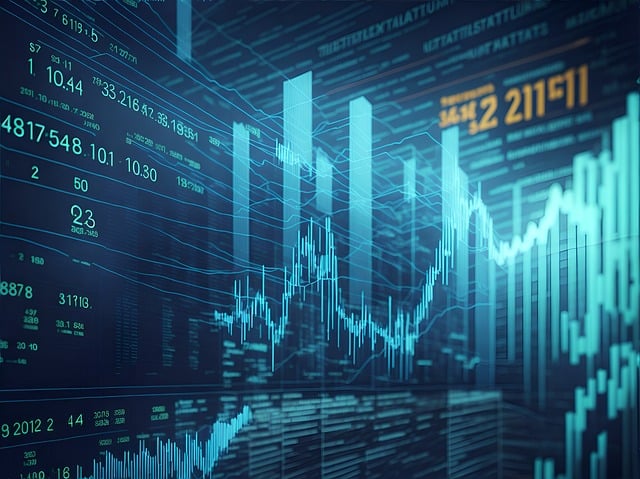The Future of Algorithmic Crypto Trading in 2024: A Comprehensive Overview
As we journey through 2024, the realm of algorithmic crypto trading is rapidly evolving, marked by technological advancements and increasing adoption among traders and investors. This article delves into the intricacies of algorithmic trading within the cryptocurrency market, exploring its benefits, challenges, and the future landscape that awaits both traders and the broader financial ecosystem.

Understanding Algorithmic Trading
Algorithmic trading involves using complex algorithms to execute trades in financial markets. In the context of cryptocurrencies, these algorithms analyze vast datasets in real-time, assessing market trends, price movements, and trading patterns to make informed trading decisions without the need for human intervention. The primary goal of algorithmic trading is to increase efficiency and reduce the emotional biases that often accompany trading decisions.
The Rise of Cryptocurrency and Algorithmic Trading
The popularity of cryptocurrencies has surged, paving the way for innovative trading strategies. With the unique volatility inherent in cryptocurrencies, algorithmic trading offers several advantages:
- Speed: Algorithms operate at lightning-fast speeds, capable of executing trades within milliseconds, an impossible feat for human traders.
- Data Processing: Algorithms can analyze vast datasets, identifying trends and making predictions based on real-time market conditions.
- Emotionless Trading: Algorithms adhere to predefined strategies, removing the emotional factors that lead to poor decision-making.
- Backtesting: Traders can test their trading strategies against historical data to optimize their algorithms before deploying them in live markets.
Current Trends in Algorithmic Crypto Trading for 2024
As we move further into 2024, certain trends in algorithmic crypto trading are emerging. The landscape is continuously shifting, influenced by technological advancements and regulatory changes.
1. Increased Use of Artificial Intelligence and Machine Learning
The integration of artificial intelligence (AI) and machine learning (ML) into algorithmic trading is becoming increasingly prevalent. These technologies allow traders to:
- Analyze Sentiment: Algorithms can assess social media sentiment, news articles, and other external factors impacting market trends.
- Predict Market Movements: AI-powered models can analyze historical data to make predictions about future price movements, enhancing the accuracy of trading strategies.
- Optimize Trading Strategies: Machine learning enables algorithms to adapt to changing market conditions, continually improving their performance over time.
In my opinion, the increasing reliance on AI and ML in trading is a double-edged sword. While it enhances efficiency and accuracy, it also raises concerns about market manipulation and algorithmic trading's impact on volatility.
2. Enhanced Regulatory Oversight
As the cryptocurrency market matures, regulatory bodies worldwide are taking a closer look at algorithmic trading practices. In Canada, the Ontario Securities Commission (OSC) and the Canadian Securities Administrators (CSA) are establishing guidelines to govern algorithmic trading. These regulations aim to:
- Ensure Transparency: Traders must disclose their trading algorithms and strategies to regulatory bodies.
- Protect Investors: Stricter rules will help prevent market manipulation and protect retail investors.
- Enhance Market Integrity: Regulations will promote fair trading practices and enhance the overall integrity of the cryptocurrency market.
In my view, regulatory oversight is essential for the long-term sustainability of crypto markets. However, it is crucial to strike a balance between regulation and innovation to avoid stifling growth.
3. Emergence of Decentralized Finance (DeFi) Algorithms
The rise of decentralized finance (DeFi) has introduced new opportunities for algorithmic trading. DeFi protocols enable users to trade assets, lend, and borrow without intermediaries. With the advent of decentralized exchanges (DEXs), algorithmic trading can now be performed on these platforms, allowing for:
- Liquidity Provision: Algorithms can act as liquidity providers, earning fees for facilitating trades on DEXs.
- Arbitrage Opportunities: Traders can exploit price discrepancies between decentralized and centralized exchanges by deploying algorithms that execute trades instantly.
I believe that the integration of algorithmic trading into the DeFi space could democratize trading, making sophisticated strategies accessible to retail investors.
Challenges Faced by Algorithmic Traders in 2024
Despite the advantages and growing popularity of algorithmic trading, traders face several challenges as we progress through 2024.
1. Market Volatility
While volatility presents opportunities, it also poses risks for algorithmic traders. Sudden price swings can lead to unintended consequences, such as:
- Slippage: Algorithms may execute trades at prices significantly different from anticipated levels during high volatility.
- Loss of Liquidity: In rapidly changing markets, liquidity can dry up, making it challenging for algorithms to execute trades.
In my perspective, traders must implement safeguards and dynamic strategies to navigate these volatile conditions effectively.
2. Technological Risks
Algorithmic trading systems are vulnerable to technological failures that can lead to significant losses. Critical issues encompass:
- Software Bugs: Errors in coding can result in unintended trading behavior.
- Server Downtime: Outages can prevent algorithms from executing trades, particularly during critical market events.
I firmly believe that developers must prioritize robust testing and redundancy measures to mitigate technological risks effectively.
3. Security Concerns
The cryptocurrency space has been marred by security breaches and hacking incidents. Algorithmic traders face the constant threat of:
- Exchange Hacks: Centralized exchanges can be vulnerable to hackers, resulting in the loss of funds.
- Smart Contract Vulnerabilities: DeFi platforms may have bugs in their smart contracts, potentially leading to significant financial losses.
In my opinion, security should be a top priority for traders, who must conduct thorough due diligence on trading platforms and smart contracts before deploying algorithms.

The Future of Algorithmic Crypto Trading
As we look ahead, the future of algorithmic crypto trading appears promising, with several developments on the horizon that could significantly impact the trading landscape.
1. Advanced Analytics and Big Data
The growing prevalence of big data analytics will enable traders to create more sophisticated algorithms capable of interpreting vast datasets. Factors influencing this trend include:
- Data Aggregation: Algorithms will increasingly analyze data from multiple sources, including social media sentiment, market news, and technical indicators.
- Predictive Analytics: Enhanced analytics will empower algorithms to predict future market movements with improved accuracy.
I believe that traders who harness the power of big data will gain a competitive edge in the algorithmic trading arena.
2. Collaborative Algorithm Development
As the algorithmic trading community expands, collaborative efforts among traders, developers, and researchers will foster innovation and improve trading strategies. Key aspects include:
- Open Source Initiatives: Open-source trading algorithms will allow traders to learn from and improve upon existing strategies.
- Knowledge Sharing: Platforms for sharing research and trading insights will create a more knowledgeable trader community.
In my opinion, collaboration is the key to driving further advancements in algorithmic trading technology, ultimately benefiting the entire trading community.
3. Integration with Traditional Finance
As cryptocurrencies gain acceptance among traditional financial institutions, algorithmic trading practices will likely converge with established financial markets. Possible outcomes include:
- Cross-Asset Trading: Algorithms will enable seamless trading across cryptocurrency markets and traditional assets.
- Regulatory Frameworks: Harmonized regulations will provide more clarity for traders operating within both spheres.
I think that bridging the gap between crypto and traditional finance will create new opportunities for traders, allowing them to diversify their portfolios and access a wider array of investment products.
Conclusion
As we venture deeper into 2024, algorithmic crypto trading stands at the forefront of innovation in financial markets. The rapid development of technologies such as AI and big data, combined with increasing regulatory scrutiny and the growing prominence of DeFi, will shape the future landscape of crypto trading. Nevertheless, traders must navigate the challenges posed by market volatility, technological risks, and security concerns to succeed in this dynamic environment.
Looking ahead, those who embrace collaboration, continue to innovate, and prioritize security will likely thrive in the ever-evolving world of algorithmic crypto trading. As the market continues to change, traders must remain adaptable and forward-thinking to harness the potential of algorithmic strategies in their trading endeavors.
In my opinion, the cryptocurrency market holds tremendous potential, and the evolution of algorithmic trading will play a critical role in shaping its future.